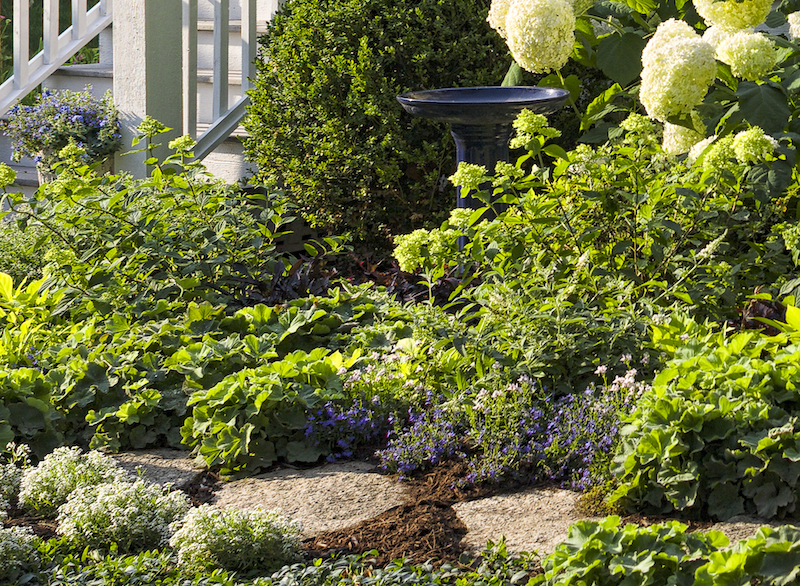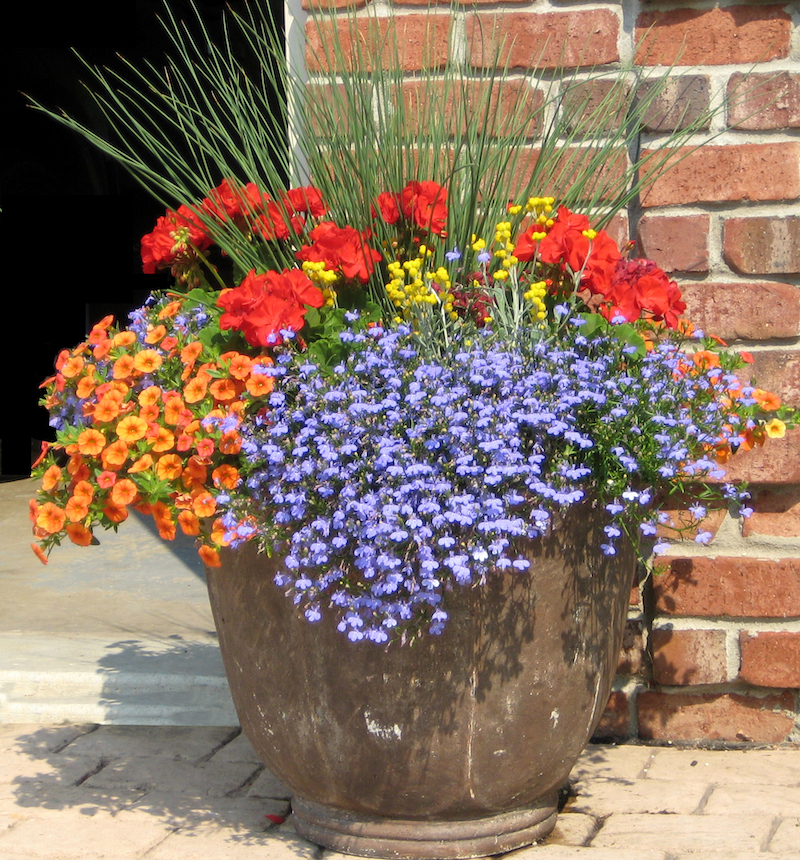Lobelia is a reliable annual that can be tucked into just about any plant combination to add a bit of trailing interest or fill in a gap. Lobelia is often one of the first annuals to appear in the garden center along with pansies, primrose, and alyssum because they are all able to withstand gentle frosts and allow eager gardeners to start planting. Paring Lobelia with other plants is easy because it is not a demanding plant and comes in a range of attractive colors. Provide part sun to full shade and good drainage, and Lobelia will thrive with little care other than an occasional haircut to encourage more blooming.

Shrubs To Plant With Lobelia
Lobelia can be planted in the landscape as a weed-suppressing ground cover with shade-loving shrubs. Hydrangea, rhododendrons, daphne, and azalea will all give Lobelias enough shade to bloom through midsummer or later. Supplemental watering will be necessary when growing Lobelia under shrubs. When possible, use drip irrigation or soaker hoses to keep the roots consistently moist.
Perennials To Plant With Lobelia
Lobelia pairs effortlessly with early spring perennials. Select bleeding hearts, ferns, columbine, and lily of the valley to feature behind the cool blues of Lobelia as a ground cover. Other shady perennials such as astilbe, hardy fuchsia, and brunnera grow well in the same conditions as Lobelia. If you have a shady garden already planted with traditional ground covers like sweet woodruff or hardy geraniums, consider using Lobelia to temporarily fill in any bare spots or add a subtle touch of color.
Annuals To Plant With Lobelia
Lobelia looks good with any annual that is in bloom from early spring to midsummer. The cool blues, whites, and pinks of Lobelia blend well with pansies, alyssum, annual geraniums, calibrachoa, and petunias. Annual fountain grass will be the star of the garden when underplanted with lobelia, coleus, sweet potato vine, and ageratum.

Photo by K M, unmodified, Flickr, copyright CC BY 2.0
The root system of Lobelia is generally quite small compared to other annuals, making it easy to tuck into empty spots of the garden. Try planting it in the cracks and crevices of a stone wall, or along a set of stairs to cascade over the edge. Its trailing habit will gently soften any hard edges.
Best Companion Plants For Lobelia in Containers
Lobelia is an ideal container plant and makes the perfect spiller. Use it in early season planters with pansies, violas, and sweet alyssum, or add it to summer planters with bright and bold colors. A particularly lovely combination features a soft rush in the center, a bright yellow calibrachoa and red annual geranium as fillers, and a blue Lobelia as the spiller to soften the edges. This type of mixed planting will remain attractive through the summer if protected from hot afternoon sun. Use a diluted lIquid fertilizer once a month to support continuous blooming.

Plants Not To Grow With Lobelia
Do not plant Lobelia with plants that thrive in hot sun with little supplemental watering, such as sedum, yarrow, coneflower, low-growing ornamental grass, and juniper. These selections are great for waterwise plantings but languish in moist locations with Lobelia. Plants that spread fast or overtake other plants should also be avoided with the more delicate Lobelia. Hostas, daylilies, and cosmos will grow much larger than Lobelia and may look out of scale.
Best Plants To Grow With Lobelia
Lobelia works best as a “spiller” in containers and hanging baskets, where it can fill in and trail around other plants. Combine it with cool-season container plants like impatiens, violas, and sweet alyssum, for a refreshing spring display. Try combining Lobelia with shady perennials like astilbe, columbine, hardy fuchsia, and ferns to create a different look that can go from spring to summer with little maintenance.
 |
Author Robbin Small - Published 9-25-2023 |




